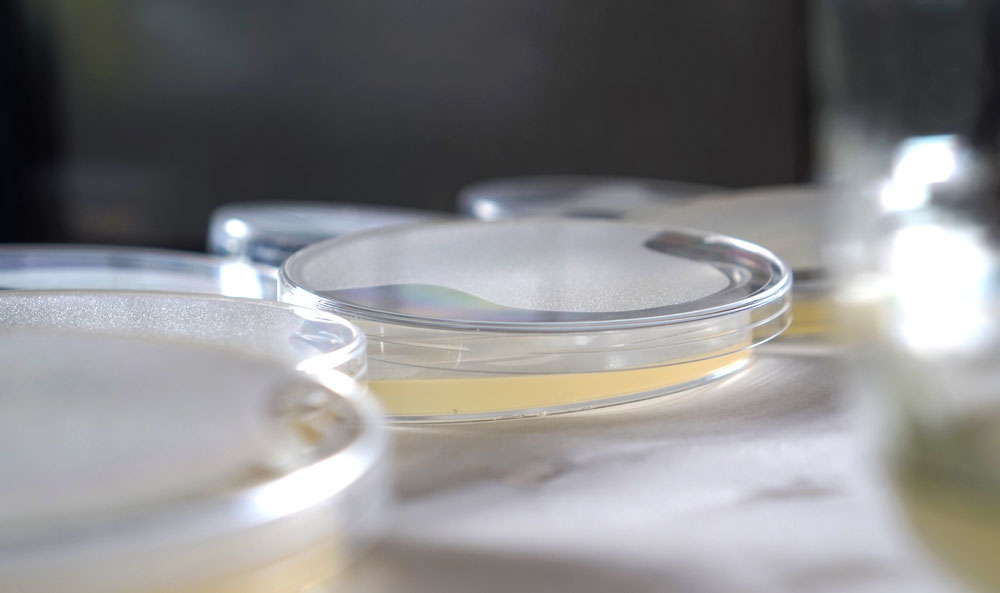2. Make Agar Plates
PREPARING PETRI DISHES FOR YOUR SAMPLES
Agar plates are one of the most important parts of this process. They exist as the environment we have engingeered to grow out our endophytes. If we didn't have agar plates, it would make working with the microbes inifintely more difficult.
Equipment:
Gloves
Spoons
Weighing scales
Spirit lamp, spirit and wick
Pressure cooker
Sterile Petri dishes
Aluminium foil
Markers
Ingredients:
200g Potatoes
20g Dextrose
20g Agar-Agar
1Litre Still water
Process:
1.) Clean and rinse all equipment that you will be using thoroughly and dry.
2.) Wipe the equipment and the workstation with alcohol for sterilization.
3.) Add 200g sliced unpeeled potatoes to 1litre of water.
4.) Boil for 30 mins.
5.) Strain off the potato infusion.
6.) Make up the potato infusion to ~1litre of water.
7.) Add Dextrose.
8.) Add Agar.
9.) Boil mixture until dissolved.
10.) Decant mixture to Autoclaving vessel. (This can be a glass jar like a jam jar, but try not to use them over and over as they will shatter)
11.) Cap with aluminium foil.
12.) Add vessel to pressure cooker.
13.) Fill bottom of the pressure cooker with water, and place autoclaving vessel on to the wire rack. (This allows the entire vessel to be surrounded with steam which will do the work of sterilization)
14.) Pressure cook for 15 mins.
15.) Turn off the pressure cooker and allow to return to room pressure (~20 mins)
16.) Get ready to plate out the agar, directly from the autoclave: clean your surfaces and light your flame.
17.) Pour enough agar into each dish so that it coats the bottom. Around 15 to 20ml is usual.
18.) Arrange the plates around the flame, with the lids slightly open to allow the agar to harden, and to prevetn condensation from building up.
19.) Once the dishes are dry, and there's very little condensation on the lids, you can close them up and stack them into the fridge for storage.
20.) Try to use the plates within 2 weeks.
